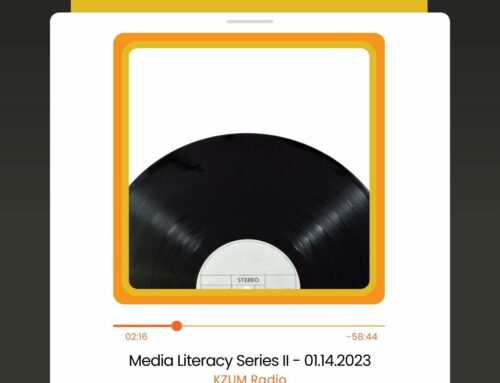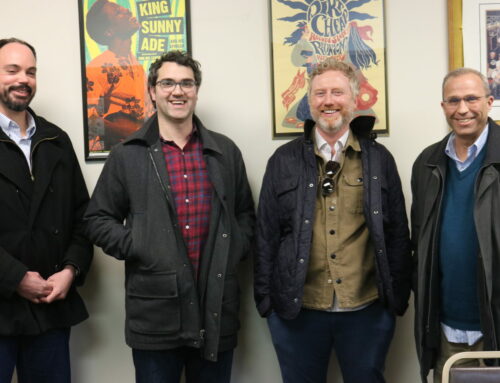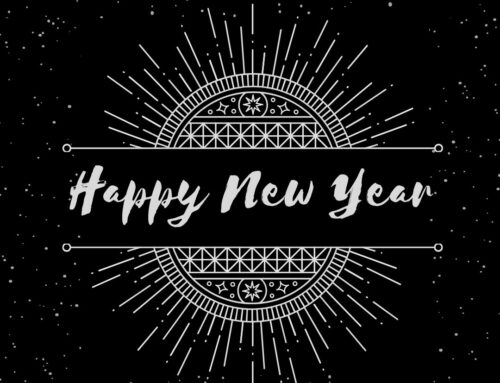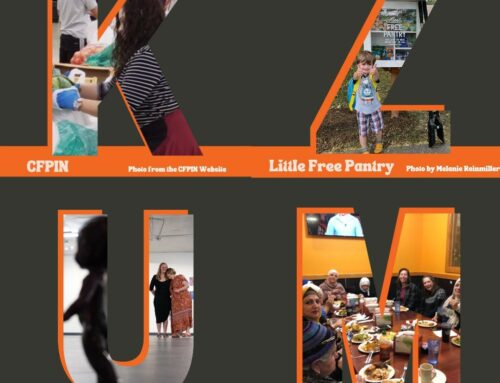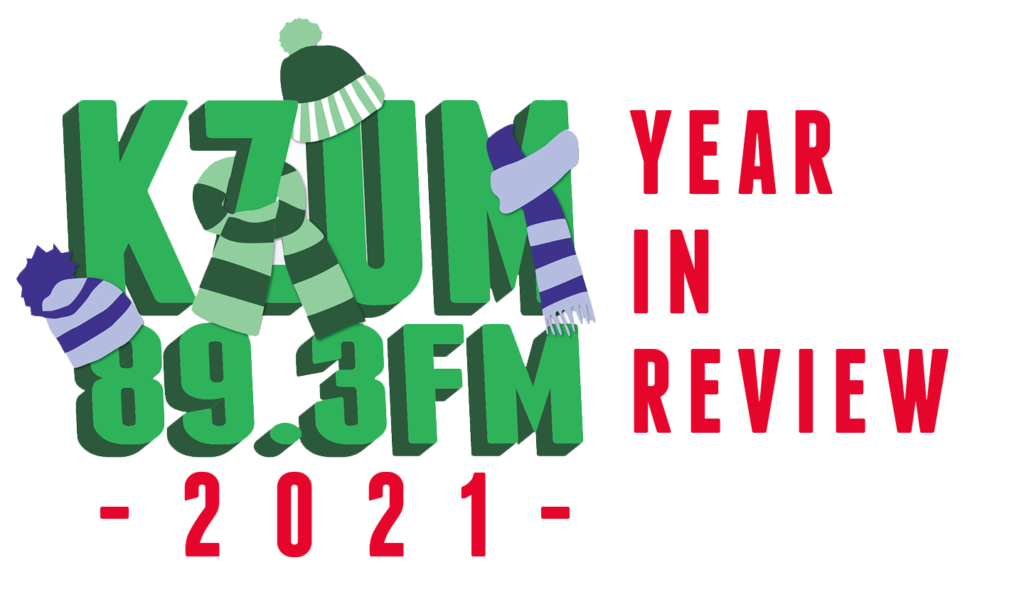
Some favorite recordings and music books from 2021
Scott Scholz,
Polley Music Library
Here’s 5 of my favorite adventurous recordings from this year, followed by 5 of my favorite music books published this year (plus an interesting multimedia bonus). You can check out most of the music books from the Polley Music Library, on the 2nd floor of the Bennett Martin Library at 14th and N in downtown Lincoln.
Recordings:
Orquesta del Tiempo Perdido – Traantjes (Astral Editions)
This ensemble is a project of composer and guitarist Jeroen Kimman, who pieced together this extensive recording featuring 21 musicians by exchanging files with them during the pandemic. The recording is absolutely fascinating to me—taken as a whole, it incorporates classical, European jazz, and soundtrack kinds of atmospheres, and the pieces are sophisticated, layered, and downright beautiful. Yet somewhere there is always something kind of strange or “off” that makes you scratch your head in a good way—a rhythm skitters out of control, a strangely harmonized passage barges in, that sort of thing. It’s lovely and a little alien all at once, and I can’t stop listening to it.
Flying Luttenbachers – Negative Infinity (Ugexplode)
Weasel Walter’s long running-band the Flying Luttenbachers made a comeback in 2019 with a pair of albums, the first since “Incarceration by Abstraction” in 2007. The band has always veered between polarities of free improvisation and intricately composed works, and their 2019 comeback albums represented the improvised aspects of the band. This year we got “Negative Infinity,” a return to Walter’s intense and detailed compositional approach, which has often been called “brutal prog.” Besides this music being mind-boggling, it’s noteworthy that this is the first Flying Luttenbachers outing that doesn’t feature Weasel at the drum kit. Instead, he’s very capably sharing guitar duties with Katti Battistoni, and Lincoln Nebraska native Sam Ospovat is at the drums. In the long history of this band, this is the second time a Lincoln native has been in the band: bassist extraordinaire Jonathan Hischke was in the band during its Chicago stint in the early Oughts.
Wendy Eisenberg – Bent Ring (Dear Life Records)
Guitarist and Composer Wendy Eisenberg had a particularly prolific year in terms of recordings, and frankly they’re all among my favorites of the year, including lots of instrumental work on guitar and tenor banjo, and playing in bands like the phenomenal Strictly Missionary and Editrix. Their last album of the year, “Bent Ring,” is a bit of a downshift from some of their more abstracted and assertive fare, and is essentially a singer/songwriter album featuring tenor banjo in place of guitar. Even though the record is somewhat a document of trying to work with a mostly-unfamiliar instrument, the results are intimate and compelling, and the banjo sounds like an old friend.
William Parker – Mayan Space Station (AUM Fidelity)
Besides playing nearly constant shows over the decades in a wide range of ensembles, bassist and composer William Parker might be one of the most-recorded figures in modern jazz, with nearly 500 performance credits to his name on Discogs. Just this year alone, he’s on 10 albums that I know of, including an excellent trio album called “Mayan Space Station” on which he’s the bandleader, a great improvised piano trio set with Paula Shocron and Pablo Diaz on the Astral Spirits label, and an astonishing 10-CD set as composer and bandleader on Centering Records. And a great biography about his work and life called “Universal Tonality” was published this year, too. I think of his music as an excellent bridge between the jazz of the 60s—think Coltrane, Ornette, Albert Ayler, Cecil Taylor—and the latest cutting-edge sounds happening in the world of jazz. Of his great records this year, I’m especially enamored with “Mayan Space Station.” The compositions are excellent, and guitarist Ava Mendoza gets a chance to stretch out all over this record with some of the best playing of the year.
Ad Nauseum – Imperative Imperceptible Impulse (Avantgarde Music)
This is probably difficult listening for a lot of people—it’s a death metal album, and it’s compositionally very bizarre even for death metal fans. But taken as a whole, it’s one of the most rigorous and thoroughly-conceived pieces of music I’ve ever heard. The band has evaluated every aspect of their approach, using proprietary tunings, incorporating classical compositional approaches, and even building their own electronics and studio equipment to capture their performances in the most natural, unaltered form possible. This record is a great example of how I find some of the most exciting and forward-thinking music of today happening in metal. Even if you’re not generally a metal fan, I think that if you can recalibrate yourself to the vocabulary of growled vocals and distorted instruments, you’ll find very thoughtful and adventurous work that deserves attention.
Books:
Transcendent Waves: How Listening Shapes Our Creative Lives by Lavender Suarez
This book technically came out in December of 2020, but of course December is when so many “best of” lists have already been neatly compiled and published. I think this small but powerful book deserves some more attention. One of the most important books to me as a musician, and more broadly as a person, is “Deep Listening” by composer Pauline Oliveros. In “Transcendent Waves,” Suarez picks up on the central themes of that book and expands them even further toward notions of healing and self-realization made possible through attentive listening. And it’s written in a very personable, direct style, building on personal experiences that really help to ground the concepts involved. Being a good communicator means being a good listener. The best musicians are usually the best listeners. You might approach this book at first as a musician or as a fan or music, but the contents are more widely applicable than musical practices, and very rewarding.
Reminded by the Instruments: David Tudor’s Music by You Nakai
This massive book reveals more than you ever thought possible about pianist, composer, and instrument designer David Tudor. There has long been a shroud of mystery around his work, especially the period when he devoted himself fully to circuitry and building his own electronic music systems, but author Nakai researched at the four major repositories of Tudor’s papers and instruments, sorted out the complex relationships between documents found in the different collections, and has presented a newly-complete portrait of the musician and his thinking. Essential reading for fans of John Cage, graphic notation scores, early electronic music, and of course Tudor himself.
Music, Math and Mind: The Physics and Neuroscience of Music by David Sulzer
There’s a fun subgenre of books about music that looks at musical arts through a lens of more scientific disciplines like neurology and psychology. Oliver Sacks’ classic “Musicicophilia” is a great example of this, as is Music Genome Project head Nolan Gasser’s “Why You Like It.” The latest edition to this bookshelf at the Polley Music Library may be my favorite of this kind of book. Written by David Sulzer, who might be better known as Dave Soldier in musical circles, “Music, Math and Mind” comes to us from a person who truly has a foot firmly planted in both musical and scientific camps. By day, Sulzer is a professor of Psychiatry, Neurology, and Pharmacology at Columbia University Medical Center. But the musical Soldier is responsible for all kinds of fun musical projects, from survey-driven songwriting to making music with a herd of elephants in Thailand. The book charts the fertile common ground between these seemingly distant worlds. In the end, you’ll learn a lot of interesting facts about sound, music, the physics of how it interacts with our bodies, and the neuroscience of how it’s processed in our minds. You probably don’t need to know any of this stuff to be a successful and satisfied musician. But it seems like knowing about these issues is likely to greatly enhance your relationship with music, and impart as much specificity as we presently have about how music works its magic inside our bodies and minds.
Arcana X, edited by John Zorn
In editor John Zorn’s preface to “Arcana X,” it becomes clear that he considers this 10th volume in the series to be the end. As a reader since the first Arcana was published in 2000, I’m bummed to hear that we’ve reached the end of this series, but incredibly grateful for the journey. If I had to choose one set of books in the Polley Music Library that have had the greatest impact on my own musical thinking and work, it would be the Arcana series. Like all of the Arcana books, this is a collection of essays written by contemporary working musicians across a wide range of musical backgrounds. The topics and styles of each essay can vary widely — some talk specifically about their own musical practices or influences in a straightforward manner, others take philosophical, poetic, or academic approaches, and others are downright playful, creating theatrical skits to illustrate their ideas. My favorite thing about all of these books is that you’re likely to read about some artists you already know, but you’re just as likely to read about some new-to-you artists that you’re sure to love. For me, I was delighted to read composer Charlie Looker’s intense philosophical considerations toward using melismatic passages in his music, a touching autobiographical recap from legendary drummer Dave Lombardo, and an inspiring discussion of the pedal steel guitar and its unusual quirks by Susan Alcorn, among other great essays. And new-to-me artists in this volume include composer/trombonist Alex Paxton and young composer Ben Coniguliaro, both of whose music seems to have a certain resonance with their writing styles.
The History of Bones: A Memoir by John Lurie
Lounge Lizards bandleader, actor, painter and TV fisherman John Lurie has been teasing an autobiography for at least 15 years, and apparently the pandemic finally provided the opportunity to finish it up. Lurie turns out to be an incredibly engaging writer, and I think even those with only a passing interest in his music or acting will find this book hard to put down. For those interested in more about the history of that fascinating late 70s/early 80s period in NYC when so many new kinds of music and musical hybrids blossomed, Lurie was in the middle of it all, and has a great memory for detail. Some of his recollections almost seem like the stuff of fables, but few of us have had the kind of adventures Lurie has enjoyed since adolescence. Later sections of the book discuss more of the music business side of running a large band, and many of Lurie’s difficulties over the years will likely be relatable to anyone who has tried to take their show on the road. The book doesn’t get into much of Lurie’s life in the last 20 years, but it’s his memoir, and he’s decided to keep his current whereabouts and activities more private. At least now we have the new “Painting With John” show to connect with him in the present day, and he’s been active with his musical alter-ego Marvin Pontiac project in the last few years. Hopefully there’s enough Lurie for everyone.
Bonus pandemic book/music combo: Medicine for a Nightmare, parts one and two
The whole idea behind Medicine for a Nightmare is fairly unusual: combining the roles of old-school zines and DIY record labels as they existed back in the 80s and 90s, the goal is to publish books that feature prose, poetry and visual art that are accompanied by 90-minute music compilations. The first “part” was published/released on January 1st of 2021, and part 2 arrived on October 22nd. The contributors come from a huge range of backgrounds, and the nature and style of the pieces included varies accordingly. However, there’s a bit of general curation going on: at a macro level for the whole series to come, “The core of the project is to embrace emotions and impermanence,” and then each “part” focuses on its own distillation of that general idea. Contributions to Part 2, for example, address the question, “What brings one to see another day?” The musical contributions are instrumental, and although there aren’t direct connections between the texts and the music, they definitely prove to be excellent companions.
Top 10 Albums of 2021
Vic Valverde,
Mesoterra
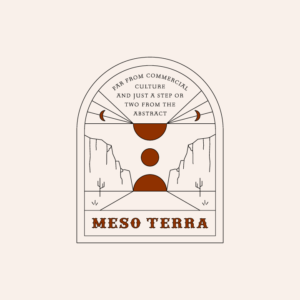
1. 30 – Adele
TOP 10 albums of 2021 – Vic Valverde
No doubt about it after a 6 year hiatus the biggest selling female artist of the 21st Century is back with an emotionally charged and dynamic collection of tunes.
2. Screaming into the Void – Ella Harp
A truly unique musician whose music defies category, with her self-built harp & banjo and equally great songs.
3. Shore – Fleet Foxes
Digitally released in 2020, CD/Vinyl dropped in Jan. 2021. Some of the most lush and beautiful sounds by Robin Pecknold & Co. and of course their amazing harmonies.
4. Riders in the Stardust Gold – The Cush
Husband & wife band out of Texas with their own mix of Americana and Psychedelia, a truly sonic joy.
5. Stellar Lights – Brigitte Bardini
Debut album by 21 year old New Zealand singer/songwriter/multi- instrumentalist/producer with a very dream-like sound. Every track is engaging and deep.
6. That Spell – Andrea Von Kampen
Local artist with her best music to date, title track is one of my faves.
7. Scaled and Icy – Twenty One Pilots
Admittedly, this album had to grow on me before I would realize how much I really like it, more pop-ish than the previous two albums
but there’s a lot to like about it with some hidden depth inside.
8. Heart of Fire – Ally Venable
Fiery blues playing by this 22 year old phenom, who takes a lot after her hero SRV. Fave blues album of 2021.
9. Native Sons – Los Lobos
A love letter of sorts to a lot of the band’s Los Angeles
music influences. As well as including one original cover Tune, are great versions of tunes by the Beach Boys, War, Buffalo Springfield, Willie Bobo, Barrett Strong, Jackson Browne and Percy Mayfield.
10. The Supporting Character – Emily Kinney
Actress/Singer who appeared for several seasons on “The Walking Dead”, her 2021 release full of cleverly written lyrics and catchy melodies. A musical treatise on her career & life up to this point in time. A local talent worthy of wide acclaim.
Essay: Isn’t It a Pity about Get Back / Let It Be
Jack of Hearts,
Sound & Vision (formerly)
Isn’t It a Pity about Get Back / Let It Be
Jack of Hearts
While Let It Be was the last album released by The Beatles in May 1970 in tandem with a documentary of the same name, most of the songs were recorded over a year earlier in January 1969, as many Beatle fans know. The sessions for the album, under the working title of Get Back, were conceived originally as a project that would allow the band to focus upon playing as an ensemble again without relying upon overdubs in order to play a concert that would be televised then released as an album, all in an effort to revitalize the group after the recording sessions for their previous album (The Beatles, commonly referred to as the “White Album”) revealed disconnection and discord among them at times. The sessions were filmed originally by Michael Lindsay-Hogg for a documentary that was intended to accompany the TV concert, showing The Beatles working on the songs that would be featured in the live show. That was the plan, anyway, or at least one version of it, courtesy of Paul McCartney, whose fellow Beatles did not share equally in his enthusiasm for all aspects of the project, as many Beatle fans also know, as it evolved into what we know today as the Let It Be album and documentary, complete with the rooftop concert marking the band’s last live performance.
Fast forward half a century, and fans like me find themselves enjoying a flurry of releases associated with the project, including the 50th-anniversary reissue of the Let It Be album along with a book of transcripts of conversations among The Beatles and their circle that were recorded during the project and a new documentary of the sessions by Peter Jackson, both titled The Beatles: Get Back, both of which are culled from footage and audio recordings originally overseen by Lindsay-Hogg of the rehearsal and recording sessions for what became the Let It Be documentary. As I immerse myself in the reissue of Let It Be, I have been reveling in the various takes, rehearsals, and jams that are included in the super deluxe edition, not to mention the original Glyn Johns mixes of the songs, all of which devotees of the band will enjoy immensely, especially those who are familiar with bootlegs of this material released over the years. The same can be said about the Get Back book, in turn, along with the Get Back documentary, although Jackson’s film will not be for everyone due to the protracted story that it tells about the Get Back / Let It Be project over the course of almost eight hours. That said, a revisionist narrative accompanies these releases, one that emphasizes how the rehearsal and recording sessions for the Let It Be album and film were much less discordant than is generally believed, and Jackson’s film offers ample evidence in support of the genial spirits shared by The Beatles during these sessions. (A similar narrative concerning the recording sessions for what became The Beatles accompanied the 50th-anniversary reissue of the album in 2018 too, and in writing about that reissue then for KZUM I was keen to dispel that revisionist narrative circulating at the time, as it challenged received wisdom concerning the recording sessions for the album just as the latest one concerning the Get Back / Let It Be era does.) In immersing myself in all of this material, though, I find that both the received wisdom and the revisionist narrative concerning this era of The Beatles’ career lack the nuance that the era deserves. The album reissue, book, and documentaries associated with the Get Back / Let It Be sessions reveal a band that is ambivalent about its future together, as the sessions at Twickenham Film Studios and Apple Studios find them mindful that they are growing apart musically and personally, despite the charisma that they can exude still while rehearsing or recording, all of which results in a collection of songs that turn upon these mixed emotions.
Despite participating in a project that is designed to reinvigorate them as a band, the sessions at Twickenham and Apple find the four Beatles mindful that they are growing apart musically and personally. As creative 20 somethings, the four were caught up in living the life of musicians yet did not limit themselves to musical pursuits necessarily, as 1968 gave way to 1969. John Lennon, for one, had rediscovered his artistic side with a little help from his new paramour, conceptual artist Yoko Ono, whom he first met at an art exhibit in 1966; Paul continued to pursue his various interests, including art exhibits along with avant-garde music, cinema, theatre, etc., often in the company of his girlfriend, actor Jane Asher; George Harrison spent time immediately prior to the Get Back / Let It Be sessions jamming with Bob Dylan and The Band in upstate New York, enjoying the communal spirit that suffused the proceedings; Ringo Starr indulged his passions for acting and photography while enjoying family life. Of the four, George’s experience with Dylan and The Band, where everyone was a musical equal, stood in sharp contrast to his status in The Beatles, as John and Paul continued to treat him as a journeyman songwriter whose songs continued to be passed over in favor of their own, even though both of them did not have much along the lines of songs as the sessions began, unlike George, who had a backlog of songs that he was keen to record. Such inequity in the songwriting only exacerbated the dissonance that existed between them already and morphed into dissension as sessions for Get Back / Let It Be commenced in January 1969.
Many Beatle fans already know about some of the trouble that marred the sessions at this time. George walked out of the Twickenham sessions over his frustrations with John’s and Paul’s lack of enthusiasm for his songs and Paul’s continuing habit of stage-managing musical arrangements; George’s disdain for staging a concert for broadcast on television was a factor as well. A conversation between John and Paul recorded surreptitiously after George’s departure, included in the Get Back film, finds John lamenting their treatment of him, describing George’s frustrations as a “festering wound” in need of healing before chiding Paul that his habit of stage-managing musical arrangements has not served their songs best always, all of which of course reflects poorly on them both. While George’s departure is not depicted in the Let It Be film, it is treated in the Get Back film, and it is presaged by a scene featured in both documentaries in which Paul and George haggle over arrangements after a run-through of “Two of Us” during the second week of rehearsals, which culminates with George saying “I’ll play, you know, whatever you want me to play, or I won’t play at all if you don’t want me to play. You know, whatever it is that’ll please you, I’ll do it. But I don’t think you really know what that one [the arrangement for the middle eight of the song] is.” Such an exchange undermines the bonhomie Paul hopes to restore within the band, certainly, not to mention how it reveals that the teamwork and compromise necessary in order to function as an ensemble can be lacking among them. A transcript of the conversation underscores this sentiment, as George interjects “‘You and I are [rather than ‘have’] memories…longer than the road…’” (45, emphasis added) as they struggle with the middle eight, which points up how much of the Beatle dream lies in the past at this point. A transcript of a conversation a day later shows George floating the idea of a “divorce,” in turn, prompting Paul to reply “Well, I said that at the last meeting. But it’s getting near it, you know,” before adding that he thinks it would be a shame for them to break up at this point in their career (60), which reinforces how fraught their interpersonal relationships could be at times. George then leaves the band three days later to cap the second week of rehearsals, following more work on “Two of Us,” ironically enough. (I wonder sometimes if George was put off not only by the stage-managing of its arrangement but by how the song’s trademark duet between John and Paul reminds him of their songwriting partnership and ongoing prominence within the band.)
While the move to Apple following George’s return, coupled with the appearance of Billy Preston who joined the project at the band’s invitation, helped alleviate the dissension among them to a great extent, its manifestation during the sessions remains sobering and points up how the three primary songwriters in the band continued coming into their own as individual songwriters, the significance of which I first discussed in my review essay on the 50th-anniversary reissue of The Beatles for KZUM. George voices his interest in recording a solo album, in fact, in order to work through his backlog of songs in a conversation with John, Yoko, and Billy late in the sessions in that January of 1969 which reveals even more than his individuation:
George: John…I tell you what I’d like to do after this…
John: Yeah.
George: After this show, you know, I’ve got so many songs that I’ve got, like my quota for the next ten years, or albums.
John: Yes.
George: I’d just like to maybe do an album of songs.
John: On your own?
George: Yeah…’cos it would be nice to get ‘em all out of the way…
John: Yes. It’d be nice anyway.
George: And secondly just to hear what all mine are like all together.
John: Yeah. You see it’s good if we put out an LP and it’s all safe that The Beatles are together, but George is doing an album.
George: Oh yeah. But, I mean, it’d be nice too if any of us can…
John: Same as me doing an album…
George: …do separate things, like, as well. That, that way, it also preserves this, The Beatle bit of it, more. Because then…
John: You could have an outlet for every little note you want…
George: You know, ‘cos all these songs of mine I could give to people who could do ‘em good, but I suddenly realised, you know, fuck all that: I’m just going to do me for a bit… you know. [laughs]
Billy: Yes, yes. That’s the real thing, man.
Yoko: It’s great. That’s a good idea. (190)
I find this exchange quite revealing in the way it points up how aware The Beatles are of the enormous expectations that exist concerning their togetherness that they must navigate while recognizing their need for creative “outlets” outside of the band as they cope with their continuing individuation as songwriters. Their continuing growth as individual songwriters has a way of undermining the collaboration and compromise needed to sustain a collective, though, let alone unify the band.
While the dissension that marked the sessions has become the received wisdom over the years since the break-up to which I referred earlier, its depth at this time is undercut considerably by the charisma that they can exude still while rehearsing or recording together, which is palpable at times in both the Let It Be and Get Back documentaries. The synergy during these sessions is nothing short of revelatory, as Peter Jackson along with the music critics and journalists who have seen Get Back on Disney+ have emphasized. Musicians respond instinctively to good songs and the same holds true for The Beatles, whose work (especially with Preston) on various tracks find them reveling once again in their ensemble playing. “Get Back” finds them rocking once Ringo shifts to a drum pattern that accentuates the song’s rollicking rhythm; “Don’t Let Me Down” finds them simpatico as John’s soul stylings elicit sympathetic accompaniment from his bandmates, rounded off by the complementary figures and fills that Billy coaxes from his electric piano; even “Two of Us” finds them shining once they switch to an acoustic arrangement for the song. These moments of interbeing, if you will, for The Beatles are heartening to see and mark a band that has spent a lot of time together over the years, which enables them to play off one another deftly (provided of course that the songwriter is flexible when it comes to a song’s arrangement). This brotherliness manifests itself in quieter moments too, such as when George seeks help with the lyrics for “Something,” which prompts John to suggest that George say whatever comes to mind as he sings the line “Attracts me like…” until the right word or phrase emerges, or the various moments of mugging or horseplay for the camera. This esprit de corps manifests itself in the bonus tracks that are included on the album reissue, moreover, particularly when John interjects himself in the proceedings in various ways, such as when he suggests to George that he might sing “A mind can blow those clouds away” instead of “The wind can blow those clouds away” (emphasis added) after a pass through “All Things Must Pass,” or when he parodies Dylan briefly while singing “in the sun” near the end of a take of “Two of Us,” or when he jokes how “I’m not getting on that kit without a ciggy” after Ringo demos “Octopus’s Garden” on the piano for him and George, or when he asks Ringo “Do a nice big [imitates sound of cymbals crashing] for me, you know, to give me the courage to come screaming in” before counting in “Don’t Let Me Down” after a false start, all of which can be heard in the bonus material that makes up the super deluxe edition of the Let It Be album. That the “inexplicable charismatic thing” (qtd. in Lewisohn 174) that producer George Martin witnessed time and time again when all four Beatles worked on songs together still endures during this rocky juncture in the band is a joy to hear and / or behold, even if the dream is receding from them.
For all of the synergy exhibited during these sessions, though, the band produces a collection of songs whose musicality cannot mask the mixed emotions upon which they turn, as several may be understood as indirect commentaries upon the state of affairs in the band. During these sessions the band continued to experiment with music genres and styles as they had previously but to a lesser extent, with their forays into blues, gospel, and soul, respectively, producing songs that considered together have been seen by many critics and listeners alike as uneven in quality, which is due in part to their misgivings about continuing on together. Make no mistake: songs such as “Across the Universe,” “Don’t Let Me Down,” “For You Blue,” “Get Back,” “I Me Mine,” and “Let It Be” are all first-rate. To know that John and Paul actually co-wrote “I’ve Got a Feeling” and to hear them duet on “Two of Us” is great, even though these songs are no “A Day in the Life.” (I do love how John ad libs “Everybody put The Fool down” when he first sings his section of “I’ve Got a Feeling” during the rooftop concert, name-dropping the Dutch art collective associated with The Beatles, reverting later to “Everybody put their foot down” during the coda.) The band’s performances of “Dig a Pony” and “One After 909” bristle with energy during the rooftop concert, especially with George’s muscular lead guitar carrying both songs, yet the lyrics to both are slight, with John in particular coasting lyrically with his surrealistic wordplay on “Dig a Pony.” But none of these moments can obscure the mixed emotions circulating throughout the songs. Several songs, such as “I Me Mine” with its critique of egotism, “Let It Be” with its recognition of “times of trouble,” along with “The Long and Winding Road” and “Two Of Us” with their acknowledgements of loss, all read like elegies for the band and / or the interpersonal relationships in the band. Other songs that were rehearsed during the sessions or written during them, especially George’s “All Things Must Pass,” “Isn’t It a Pity,” and “Wah Wah,” are elegiac as well. George’s songs, in fact, make me wonder at times if they were rejected because they cut a little too close to the damaged heart of The Beatles. It would not be surprising.
The songs that emerged during the Get Back / Let It Be project resonate with some sadness and uncertainty, which reminds me of a remark by jazzer Louis Armstrong, who once said “What we play is life,” in describing musicians. While we can appreciate if not applaud the impetus behind the project—the dissonance that marked some of the recording sessions for The Beatles inspires Paul to push for a project that turns upon playing live as an ensemble in order to revitalize them as a band, building upon those moments of genial collaboration that also marked some of the sessions for that eponymous album—it is a shame, really, that they gave themselves so little time for the project, so quickly after the sessions for The Beatles. Sure, they may not have been exhausted per se at the beginning of 1969, but it took John and Paul some time to write new songs and they both should have been mindful enough to know that a month was nowhere near enough time to demo, rehearse, and record songs for an album and concert, given the amount of time that they had been spending on recording the previous two albums. (They could not begin sooner because George was vacationing in America, where he met up with Dylan and The Band; they could not continue past January because Ringo was booked to film The Magic Christian beginning in February.) And it is a shame they did not just hold on to the Glyn Johns’ versions of Get Back to release as a companion disc to polished versions of the songs, in order to showcase The Beatles’ creative process (something like the “Fly on the Wall” disc that accompanied the Let It Be…Naked release) if not shelve the album all together and move on, but of course bands and labels did not think in any of those terms back in the day. George’s observation that he, and the others, could record solo albums while keeping the band together resonates now as an if only to Beatle fans, but as always, everything changes. If all things must pass serves as an epitaph for the band, then isn’t it a pity aptly characterizes what could have been with Get Back / Let It Be.
Works Cited
The Beatles. The Beatles: Get Back. London and New York: Callaway / Apple, 2021. Print.
The Beatles: Get Back. Dir. Peter Jackson. Apple Corps Ltd. / WingNut Films, 2021.
The Beatles. Let It Be. Apple Records, 1970.
Let It Be. Dir. Michael Lindsay-Hogg. Apple Films / ABKCO, 1970.
Lewisohn, Mark. The Beatles: Recording Sessions. New York: Harmony Books, 1988. Print.

